Recent overtures for a treaty between North Korea and South Korea can be traced back 65 years
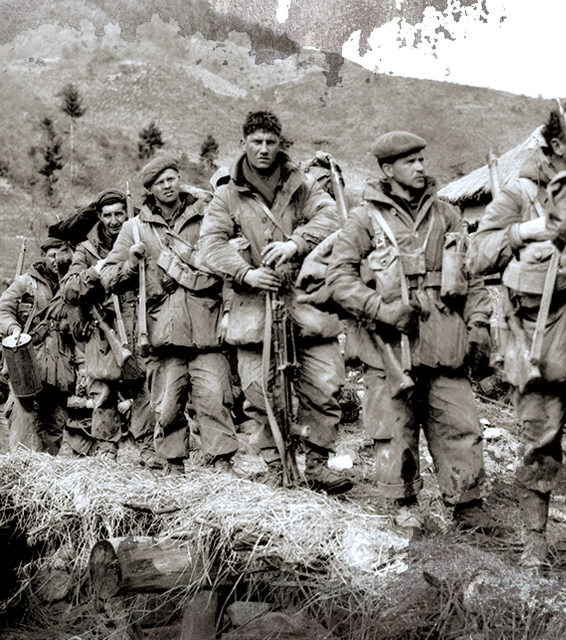
Loaded with packs and rifles, members of the Princess Patricia’s Canadian Light Infantry cross a typical Korean log bridge. [DND/LAC/PA-115034]
At the end of the Second World War, Japanese-occupied Korea was divided along the 38th parallel, the Soviet Union occupied the north, the United States the south. In 1948, the Republic of Korea (South Korea) and the Democratic People’s Republic of Korea (North Korea) were established.
Backed by the Chinese army and buoyed by Soviet equipment, 135,000 North Korean People’s Army troops invaded South Korea on June 25, 1950. Within days, South Korea’s capital, Seoul, was captured.
Canada was among the 16 United Nations countries that sent troops to South Korea. Some 26,791 Canadians served; 516 never returned home and another thousand were wounded.
Canadian troops distinguished themselves on patrol and in raids and major fighting in the Battle of Kapyong, the action along the Jamestown Line, on Hill 187, among others. The Royal Canadian Navy bombarded the coasts. The Canadian Transport Company flew 599 missions delivering supplies and evacuating wounded; Royal Canadian Air Force pilots joined in jet fighter battles with Russian MiGs. And the 25th Canadian Field Ambulance provided medical support.
The Korean war was one of the bloodiest in modern history. Of the estimated four million or more casualties, half were Korean civilians and many were Chinese. Ceasefire discussions started in July 1951, but it took two years before the guns were silenced. The stickiest point in the peace negotiations was the repatriation of prisoners of war; many soldiers refused to be returned back to the north.
Tensions have persisted ever since. North Korea wants unification under communist rule, and South Korea does not. A four-kilometre-wide, 250-kilometre-long demilitarized zone marks a frontier that bristles with armaments and troops. Recent developments have been hopeful. Landmark talks between North and South Korea, including co-operation at the Winter Olympics in Seoul, led to a cooling of rhetoric on both sides. North Korean leader Kim Jong-un promised to abandon his nuclear weapons program if the U.S. promised not to invade. It was the fifth time since 1994 that North Korea held out a promise of denuclearization. Each previous time, it reneged. At press time, negotiations on denuclearization and reducing tensions were ongoing… as a wary world watched.
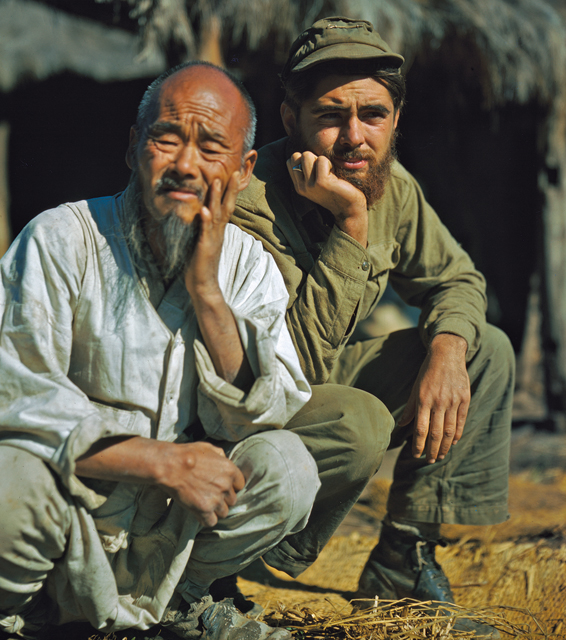
Bearded in the tradition of assault pioneers, Private David Waterbury of The Royal Canadian Regiment sits with a Korean farmer in October 1951. [Bill Olson/DND/LAC/R112-942-X-E]
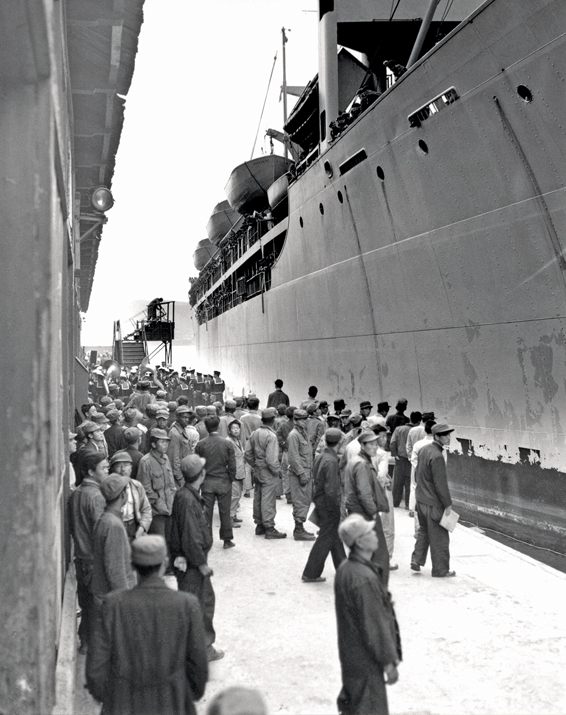
South Korean troops and a band welcome the 25th Canadian Infantry Brigade arriving by ship (right) in May 1951. [DND/LAC/PA-145370]
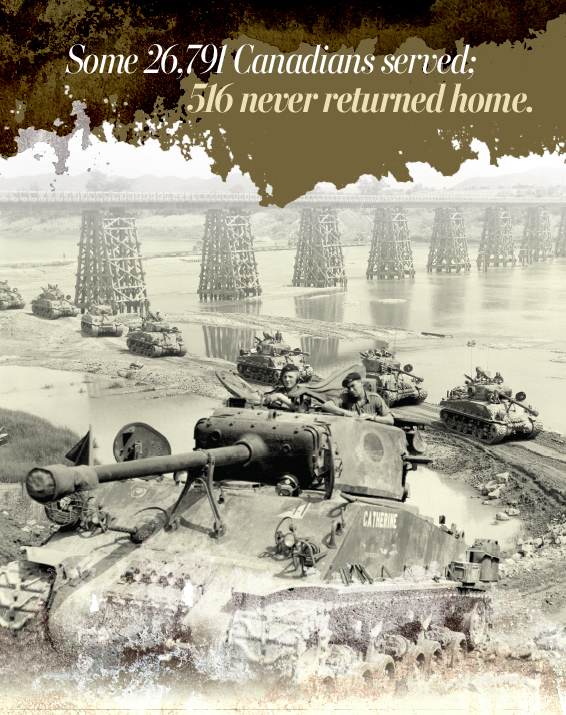
Tank crews from the Lord Strathcona’s Horse armoured regiment climb an embankment beside the Imjin River as they return from the front in July 1952. [Paul E. Tomelin/DND/CWM]
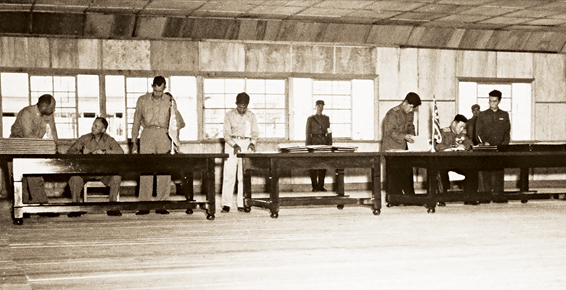
The Korean Armistice Agreement is signed (top) at Panmunjom on July 27, 1953, by UN delegate Lieutenant-General William Harrison Jr. (seated at left) and General Nam Il (seated at right) of the Korean People’s Army and Chinese People’s Volunteer Army. The armistice brought hostilities to a halt, but didn’t end the state of war. [Wikimedia]
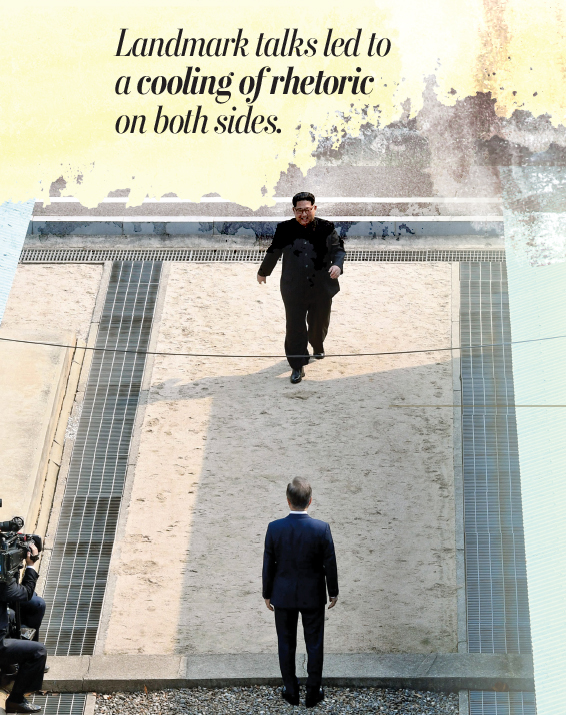
President Moon Jae-in of South Korea waits for history to be made on April 27, 2018, as North Korean leader Kim Jong-un approaches the borderline between the two Koreas. [Inter-Korean Summit Press Corps/AFLO via Zuma Press]
Advertisement



















